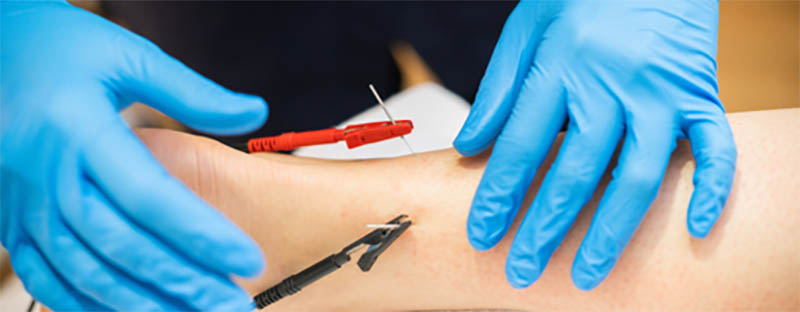
What We Already Know:
If you’ve heard someone talk about “needling” or “dry needling,” you may be curious about what it is and how it differs from acupuncture. Needling is a type of therapy that uses thin, sterile needles to target trigger points in the muscles and connective tissue. While it may look similar to acupuncture, the two therapies are different.
Acupuncture is a form of Traditional Chinese Medicine that involves inserting thin needles into specific points along the body’s meridian lines to improve the flow of energy or “qi.” In contrast, needling is a Western medical technique that targets trigger points or knots in the muscles and connective tissue.
So, how does needling work? When a needle is inserted into a trigger point, it can stimulate a reflex that causes the muscle to contract and then relax. This process can help break up adhesions or knots in the tissue, increase blood flow, and reduce pain and tension.
One of the benefits of needling is that it can reach areas of the body that may be difficult to target with other therapies like massage or stretching. It can also provide more targeted relief for specific areas of pain or tension.
It’s important to note that needling should only be performed by a trained healthcare professional, such as a physical therapist or chiropractor. These professionals have the knowledge and expertise to identify trigger points and use proper techniques to minimize the risk of injury or complications.

What Is Dry Needling?
Dry needling indeed has become a very popular method to reduce pain and improve musculoskeletal function in recent years. So what is it? With the use of a thin monofilament needle, muscles are stimulated directly with needle insertion resulting in decreased tone (muscle tension) and pain in those with musculoskeletal conditions.
Often, preceding the relief, a “twitch response” is felt upon needle insertion to an overly tender or tight region which is sometimes termed a “trigger point”. There have been other mechanisms of relief seen in studies including increased blood flow to tissues and neurophysiological responses (decreasing sensitivity through the nervous system).

Is Dry Needling Perfect For Everyone?
Dry needling can be an effective therapy for many people, but it’s important to note that it may not be appropriate for everyone or every condition. As with any invasive treatment, there are potential risks involved.
When considering dry needling, it’s important to find a practitioner who is well-versed in the technique and familiar with anatomical structures. This can help minimize the risk of complications or injury.
Some people may not be good candidates for dry needling due to underlying health conditions or other factors. For example, people who are on blood thinners or have bleeding disorders may not be able to safely undergo the procedure. Additionally, people with certain medical conditions, such as cancer or immune system disorders, may need to avoid dry needling or seek clearance from their healthcare provider.
It’s also important to note that while dry needling can be a helpful tool for managing pain and tension, it’s often used in conjunction with other therapies such as physical therapy or chiropractic care. A comprehensive treatment plan that addresses the underlying cause of pain or dysfunction is often the most effective approach.
In summary, dry needling can be a safe and effective therapy for many people, but it’s not appropriate for everyone or every condition. Finding a practitioner who is experienced and knowledgeable in the technique and working with them to develop a comprehensive treatment plan can help maximize the benefits of this therapy.
Most importantly, it is rarely the sole treatment method to correct an injury but rather serves as a potential catalyst to get you to recover faster. Addressing tissue resilience, mobility, and training practices is always a necessity in promoting optimal treatment! There are few silver bullets out there when it comes to medicine but it is nice when a part of the process is as easy to receive as dry needling; so, I would not rule it out as a helpful tool for you!
